The Museum's Collections
Ranging from Antiquity to the end of the 20th century, the Musée Rolin's collections reflect the exceptional history of the city of Autun. It evolved from a luxurious Roman city to a center of Romanesque sculpture in the 12th century. It benefited from the patronage of the Rolin family in the 15th century, under the rule of the Dukes of Burgundy. The Musée Rolin brings together paintings, sculptures, and works of art for a true walk through history. Donations have since enriched the museum's collections with 19th century paintings, works from Maurice Denis and the Nabis, and 20th century European art. The museum's permanent collection is divided into six sections and twenty rooms on three levels. The museum is housed in an old 15th century mansion built by Nicolas Rolin, chancellor of the Dukes of Burgundy.
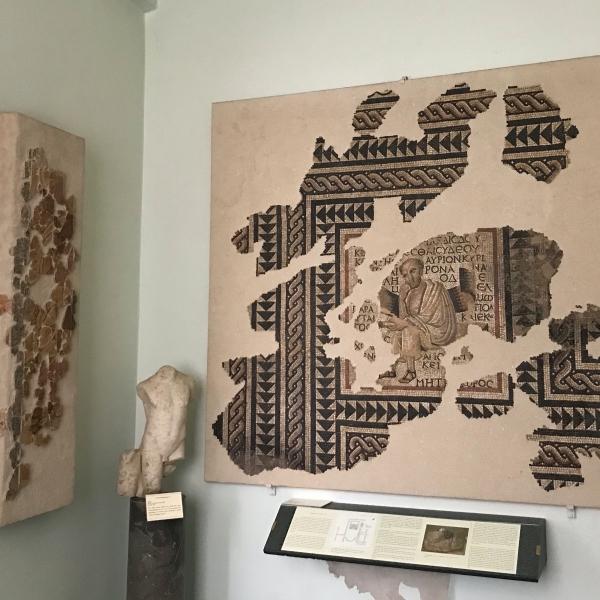
Archaeological section
Mosaic representing Bellerophon slaying the Chimera, 2nd century AD
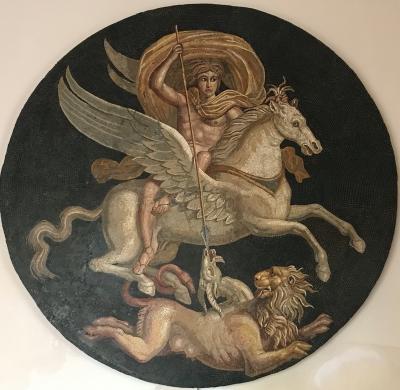
Augustodunum was a Roman city founded during the reign of the first Roman emperor Augustus, after whom it was named. This city was the "tribal capital" of the Aedui, a Celtic tribe which was a longstanding Roman ally. This city was planned to replace the town of Bibracte, 25km away. The town of Augustodunum enjoyed special privileges, such as the possibility of having impressive city walls, many of which are still visible nowadays. The museum's collections reflect the magnificence in this town from the 1st to the 3rd century AD, before the Crisis of the Third Century put an end to its opulence.
The works presented in this section of the Museum bear witness to the opulence and important economic activity in this tribal capital of the Roman Empire. Mosaics, stucco or schist decorations and sculptures reveal the magnificence of the city and wealth of some of its inhabitants. A striking example is the mosaic of Bellerophon striking the Chimera. This beatiful mosaic was first exhibited at the Louvre before being returned to the town's museum. The mosaic of Greek authors is another great example. This mosaic representes Greek philosophers with famous quotes from their works. This shows us that there was a high level of culture in this city, with Greek language being taught in the town's university, the Scholæ menianæ.
You can observe astonishing figurines made out of bronze, such as the fighting gladiators or the acrobat, as well as terracotta figurines of animals and people. There are also glassworks and tombstones which represent the inhabitants of Augustodunum.
From the 3rd century on, Christianity took hold in Autun after arriving from the East. This new religion inspired remarkable works of art. The Pectorios Inscription, which was found in a necropolis just outside the city walls, is a funerary poem written in Greek. It is also one of the earliest known Christian inscriptions in modern-day France. In the following centuries, several places of worship were erected, adorned with sculptures and capitals, as the city transitioned from Antiquity to the Middle Ages.
Romanesque Section
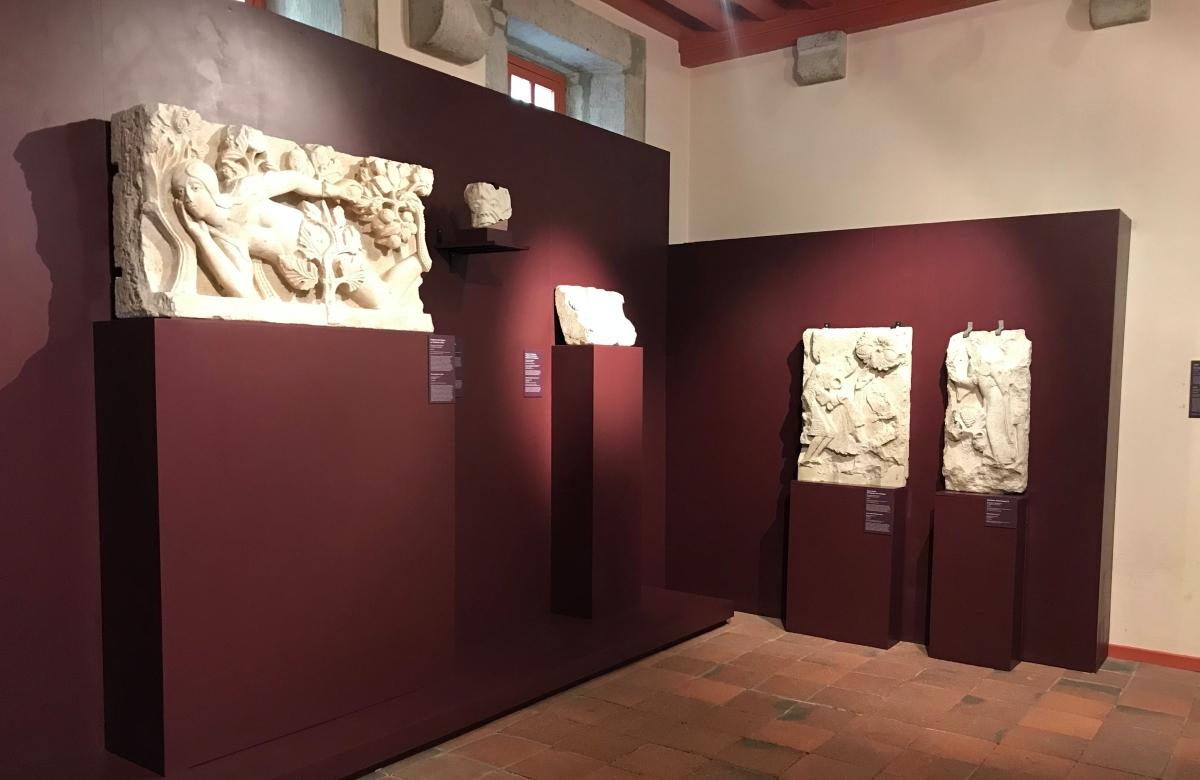
Autun was named an episcopal town in the 5th century (ie. it housed a bishop). As such, it was fitted with a cathedral church, known as Saint-Nazaire. In the 12th century, Autun became an important pilgrimage town, competing with neighboring Vézelay on the Way of St. James. In 1120, opposite the Saint-Nazaire cathedral, a church was built to house the relics of Saint Lazarus. This church was elevated to the status of co-cathedral in 1195. Its architecture was inspired by the abbey of Cluny and holds a grandiose sculpture program. This church and its sculptures is a jewel of Burgundian Romanesque style.
Rooms 7 and 8 of the Rolin Museum host the sculptures from these two cathedrals. The pillars representing Geometry and Astronomy come from the church of Saint-Nazaire, which was destroyed in the 18th century. The other sculptures in the rooms come from the Cathedral of Saint-Lazarus. They include several masterpieces, such as the famous Temptation of Eve by Gislebertus, which was above the lintel of the East portal of the cathedral until the middle of the 18th century.
Gothic Section, 15th century sculptures.
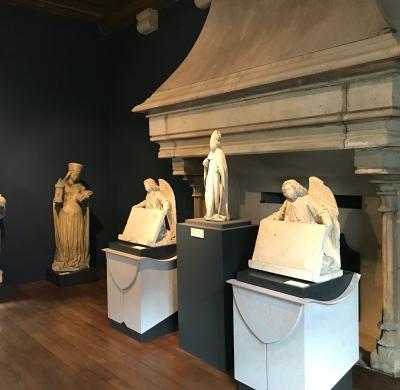
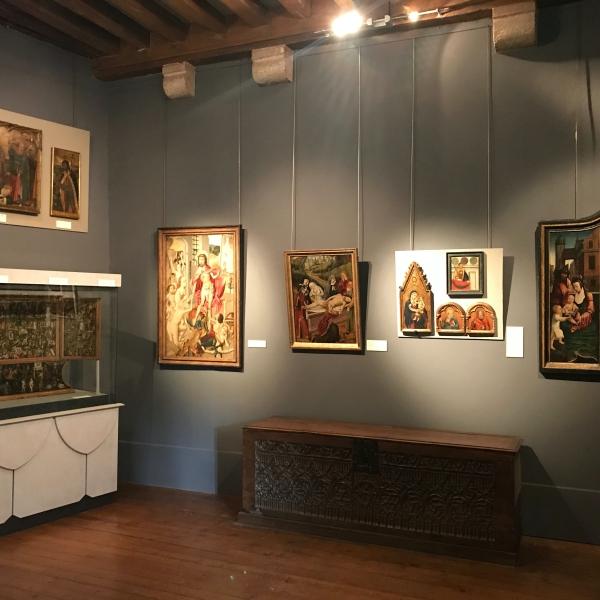
Gothic Section
The works of art of the Gothic section center around the works that are a resulf of patronage of the Rolin family, with strong ties to European Art of the 15th and 16th century. Nicolas Rolin was chancellor to Philip the Good, Duke of Burgundy. Nicolas' son, Jean, was annointed as cardinal and also had a flourishing career in Burgundy and in France. Both father and son commissioned works of art from the masters of their time : Claus de Werve, Jean de la Huerta, Jean Hey and Antoine le Moiturier. These works of art are now in the world's most famous museums, with some available here in the Musée Rolin.
Italian, Swiss, and German paintings can be seen in this section, as well as splendid tapestries. There is also an « opening virgin » that bears witness to this religious art movement in Europe, which predates Renaissance humanism.
Local Art Section
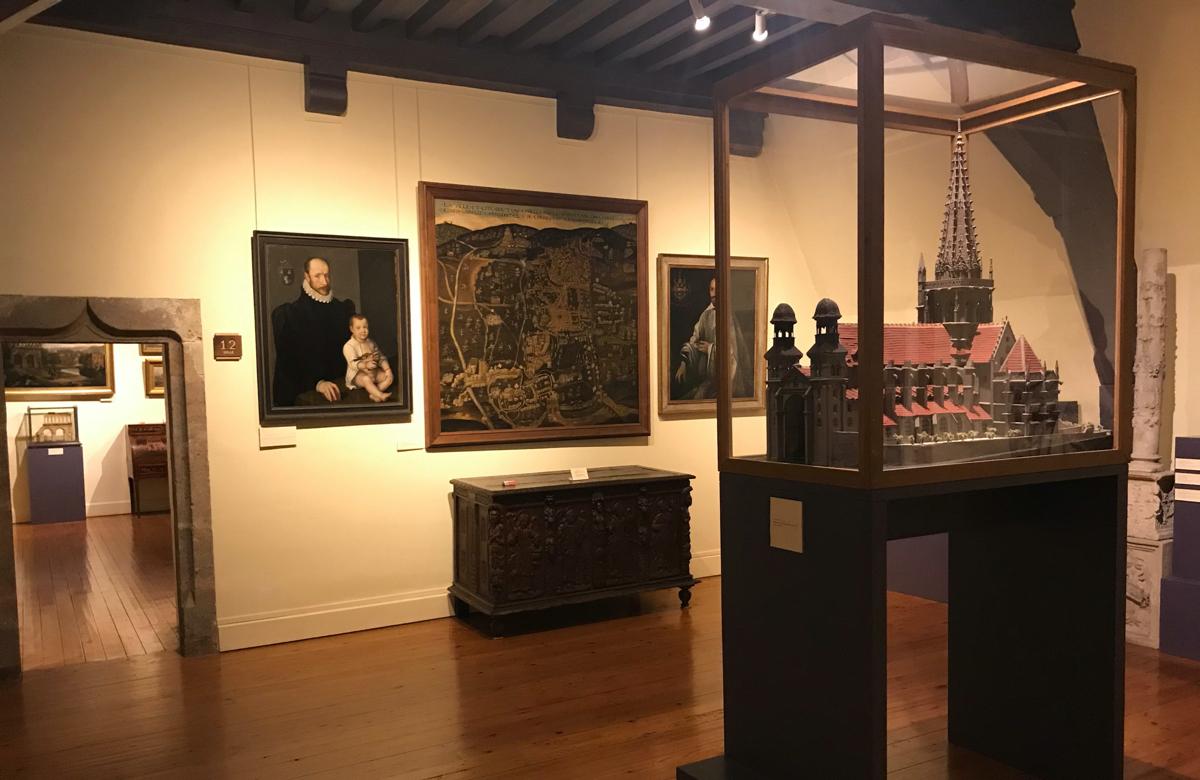
From the 16th to the 19th century, the city of Autun gradually extented its urban network within the city's Roman Walls. This section contains notable works of art such as The City of Autun Besieged, by Evrard Bredin, one of the earliest known maps of the city, dating from 1591. The painting represents a battle between the Royal army of Henry IV and the local insurgents during the Wars of Religion. This section also contains works of art in the Renaissance style from the 16th century. One example is the artworks from the Poillot chapel, built in 1527 and whose remains can be seen in room 12.
Objects, paintings, and sculptures are present in this local section which paint the portrait of a city steeped in its history. Its Roman heritage remains very present. This section also makes significant room to regional artists from the turn of the 20th century. These landscape artists of the Morvan, such as Louis Charlot or Albert Montmerot, took their inspiration both from the town of Autun and the surrouding countryside of the Morvan, and drew the portraits of many of its inhabitants.
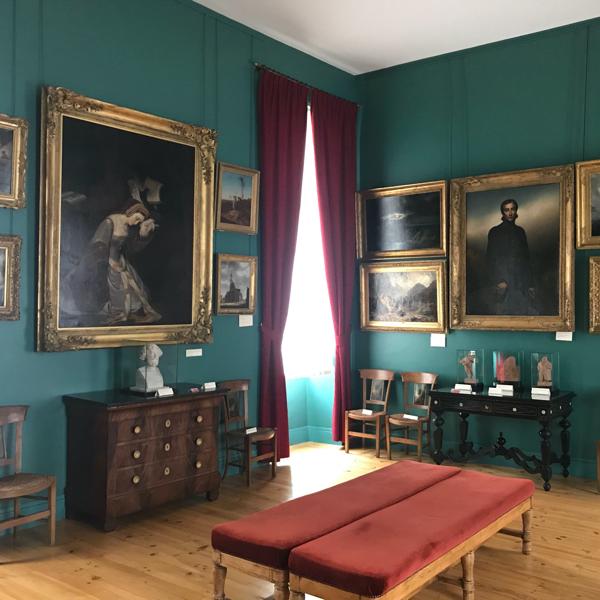
European Painting Section, romantic paintings.
In Front of the Fireplace, Boissard de Boisdenier, around 1850
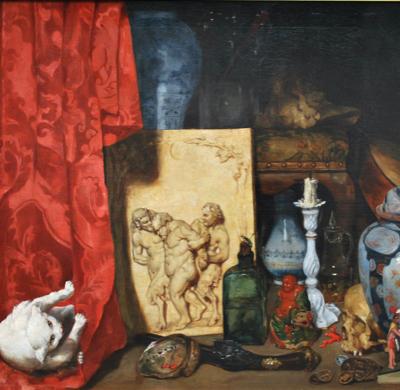
The European Fine Arts section has works of art from the 16th to the 20th century, with a strong concentration in works from the 19th century and Maurice Denis. Many of the works in this section were donated or bequeathed by patrons.
The Fine Arts section begins in room 15 withThe Triptych of the Eucharist by Grégoire Guérard (1515). This masterpiece blends elements of Italian and Flemish Renaissance styles, as was typical for art produced in Burgundy at the time. Opposite from it is a 17th century ebony cabinet, a grandiose piece of furniture which combines exotic materials with intricate paneling.
Room 16 is devoted to 18th century paintings, with paintings by artists such as Charles-Joseph Natoire and Nicolas Bertin, whose works are frequently inspired by mythology.
Rooms 17 and 18 are dedicated to 19th century art, with an important collection of romantic and troubadour paintings. These paintings usually combine historical subjects with tormented atmospheres. There are also a series of military paintings by Horace Vernet, which highlight with great precision and emotion the deeds of the French Army
Room 19 deals with Nabi painting, with artworks by Maurice Denis, Jean Souverbie,Georges Desvallières,and André Suréda. This colorful artt style serves as a bridge between Impressionist art and Abstract art. These artworks were bequeathed to the city of Autun by Eugène Chevalier in 1948.
Room Frénaud
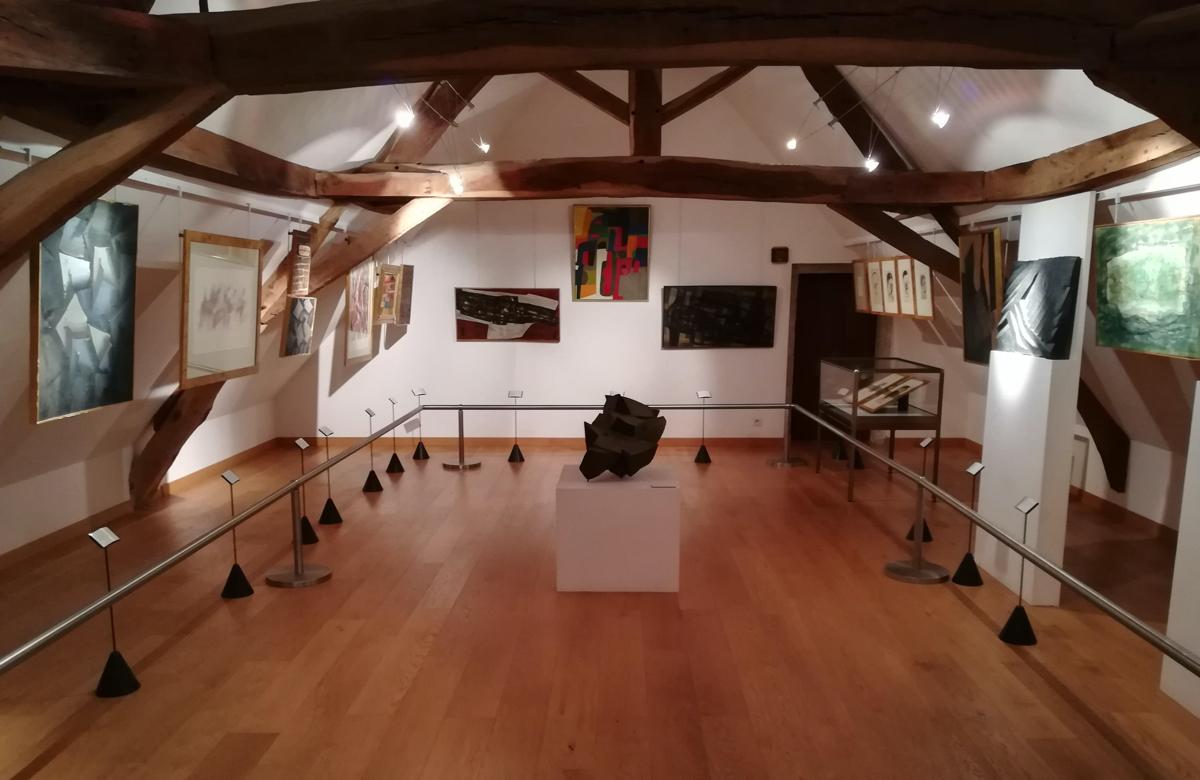
André Frénaud was one of the most important French poets of the second half of the 20th century, and a recipient of the Grand Prix national de Poésie in 1985. He bequeathed his art collection to the Musée Rolin in 1999. His collection is the result of his friendships and collaborations with various artists during his life.
The André and Monique Frénaud Donation includes works of art from some of the greatest names of 20th century painting: Jean Dubuffet, Geneviève Asse, Jacques Villon, Maurice Estève, Raoul Ubac, Joan Miró, Pierre Alechinsky, André Beaudin, etc ... This section is the end of the museum's permanent collections, and it winds up the visit by opening a bridge between the museum's collections and contemporary art.
